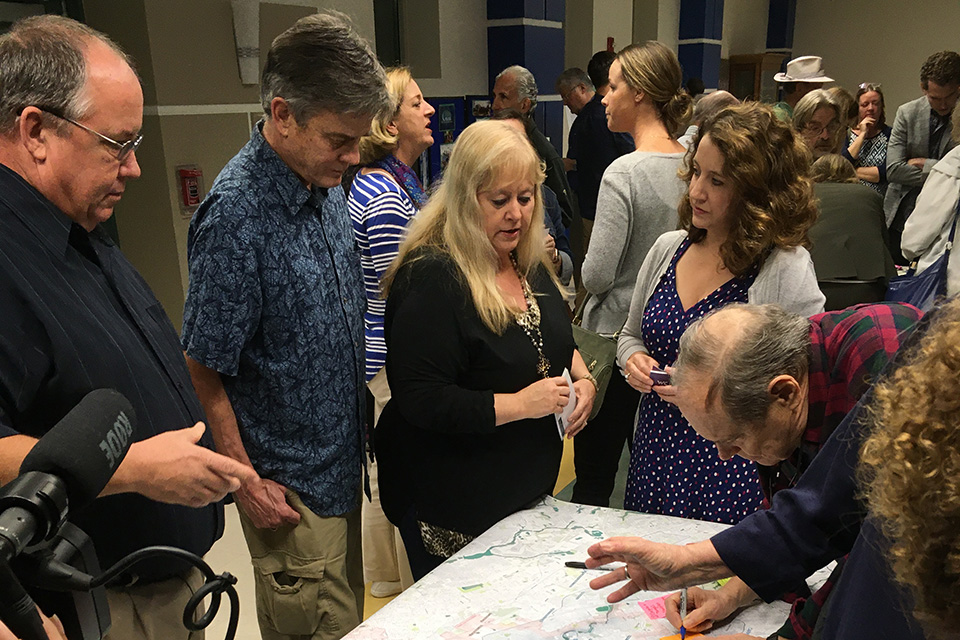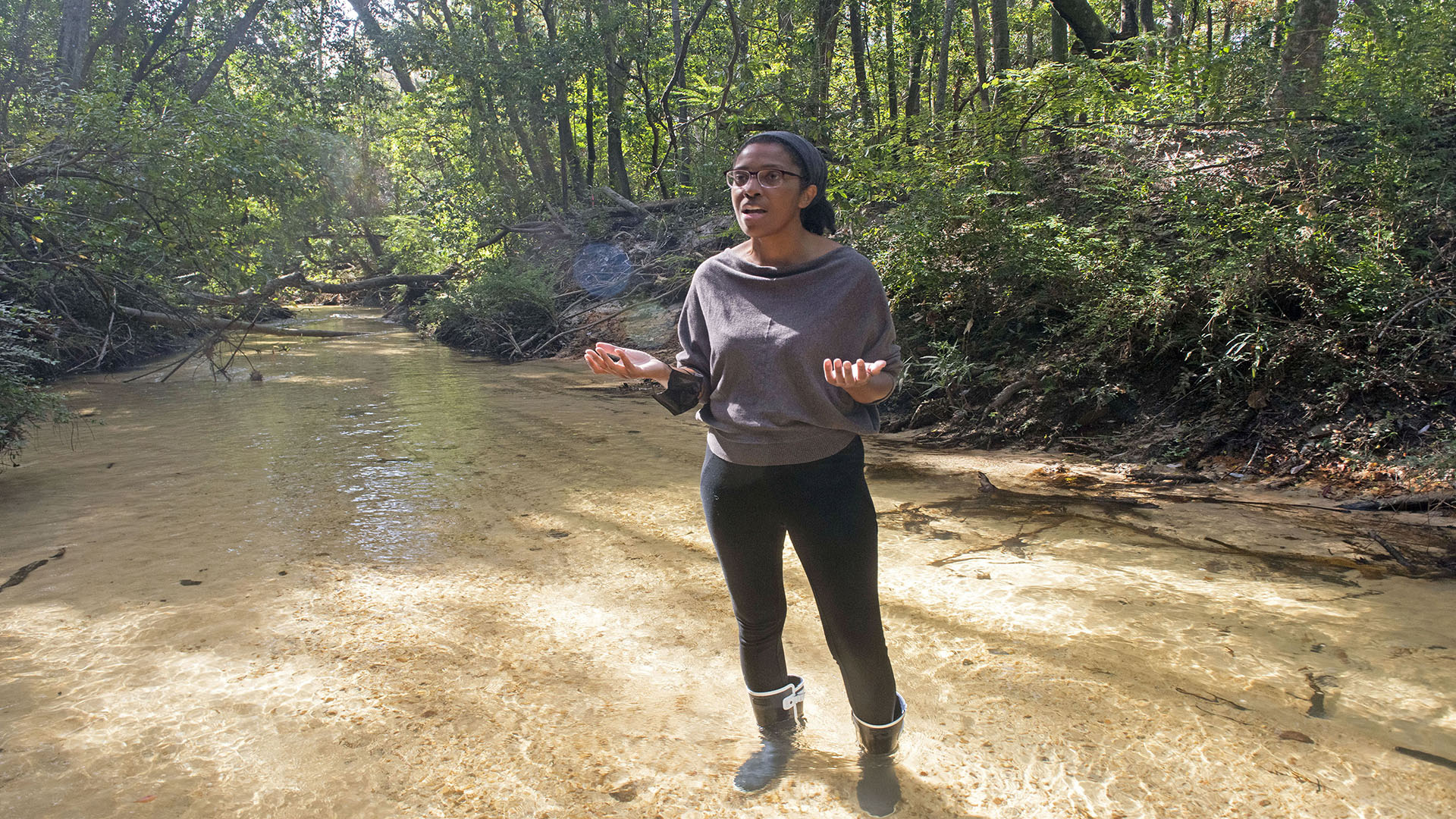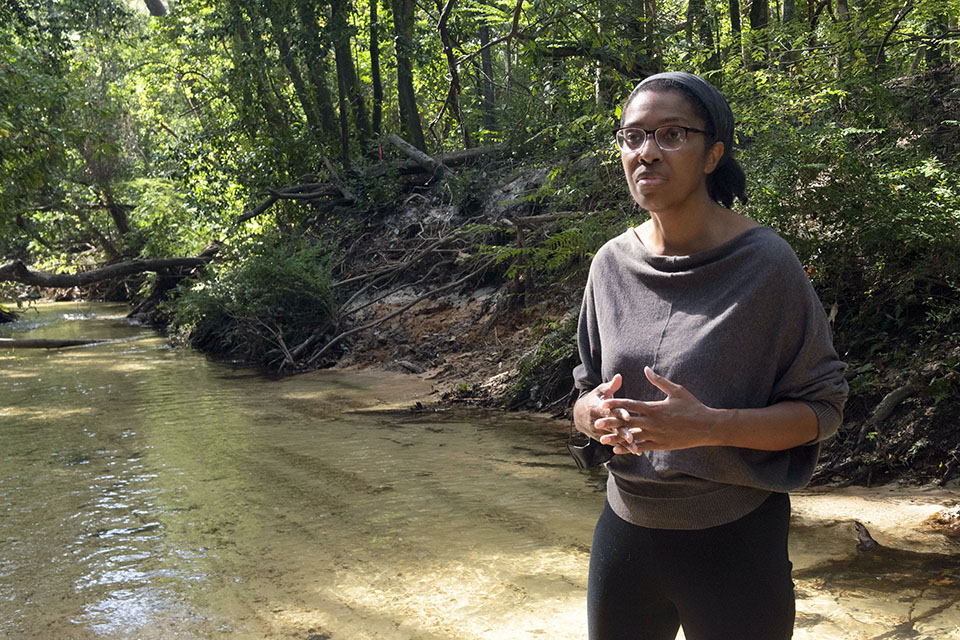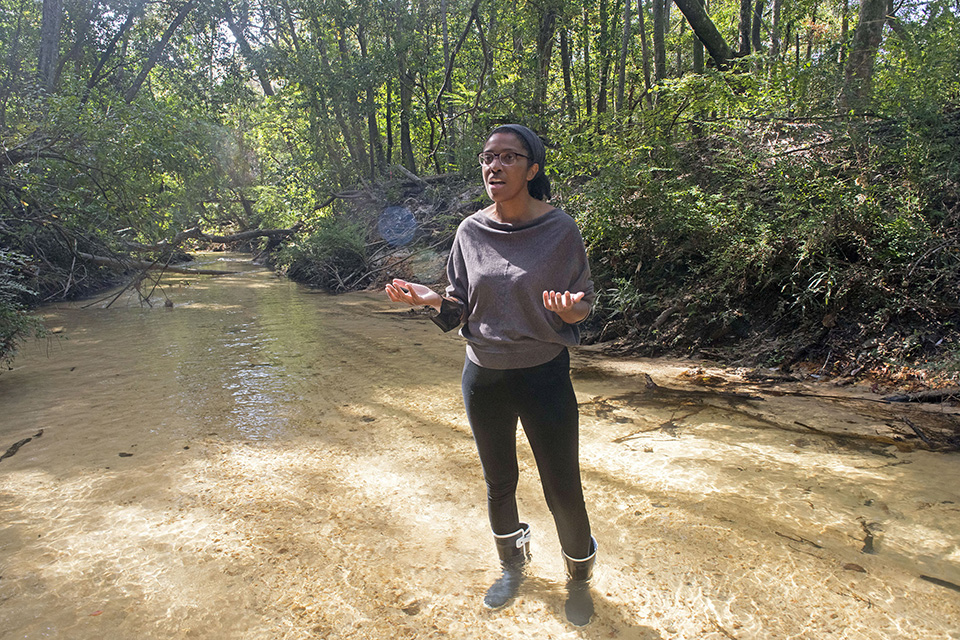For roughly half of the twentieth century, Carpenter Creek was a center of domestic and spiritual life for both Black and white neighbors, remarkably rare in an era when Florida’s beaches, pools, and public spaces were strictly segregated. Associated for many years with the African American Dawson family, on whose property a popular swimming hole was located, the Creek is now owned by the city and threatened by encroaching development and pollution.
History
The northwest corner of Florida, along the panhandle coastline, is dominated geographically by the Pensacola Bay system connecting numerous rivers and tributaries across a five-county region to the Gulf of Mexico. Characterized by rolling clay sand hills and gently sloping lowlands comprising sandy mineral soils underlain with lime rock, large portions of the area were natural wetlands before being drained for urban use as early as the 1700s. Originating at a springhead near Pensacola’s Olive Road, Carpenter Creek runs 4.5 miles north to south through the heart of Pensacola to Bayou Texar. The banks of the creek were once shaded by a rich tree canopy of longleaf pine, American beech, cedars, junipers, sweet gum, sweet bay, black gum, gall berry, and dogwood. Deforestation of this area began in the 18th century, after British colonists constructed a sawmill along Carpenter Creek, which provided easy transport of logs and lumber to the industrial wharves along Bayou Texar.
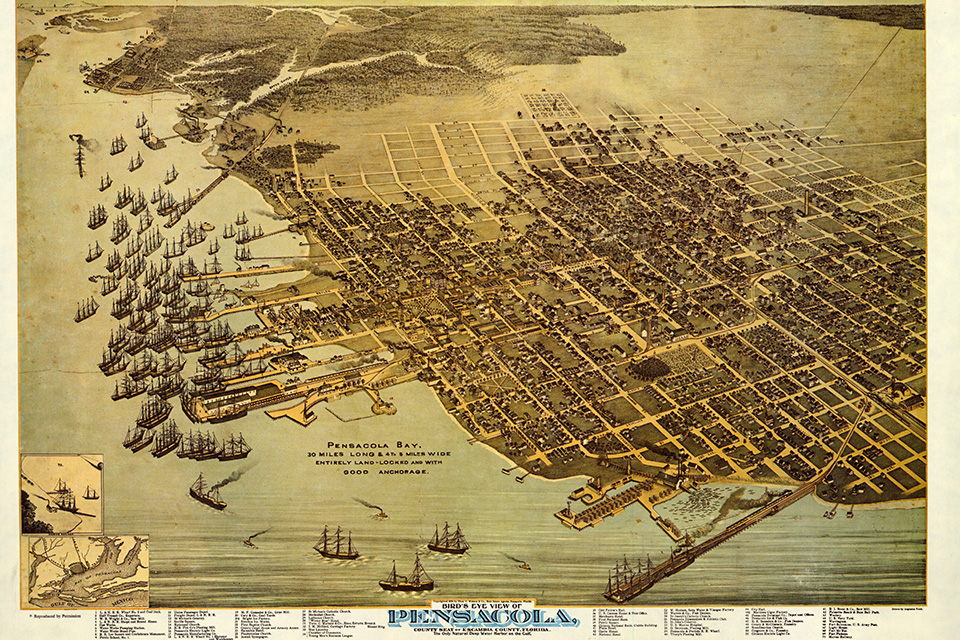 1896 map of Pensacola Bay. Photo courtesy collections of the University of West Florida Historic Trust.
1896 map of Pensacola Bay. Photo courtesy collections of the University of West Florida Historic Trust.
“Jenny” Hudgins and her husband Wesley Brown, both born in Perote, Alabama during the Civil War, had a son, Harrison, and a daughter, Minnie, who in 1901 moved with her husband Sim Dawson to northwest Florida. The Dawsons acquired ten acres of land in an area which for much of the nineteenth century was under contested ownership as British, Spanish, and Cuban colonial territories. This tract of land, known as Fontanel Place, was part of Escambia County, one of Florida’s two counties that once comprised the entire territory enclosed within modern state lines (Escambia was eventually subdivided into 21 counties).
On the edge of the Dawson’s property, a deep pool within Carpenter Creek became colloquially known as Aunt Jenny’s Swimming Hole, in honor of family matriarch, Jenny. Aunt Jenny’s Swimming Hole was unique in Florida as a recreation area used by both white and Black people in the first half of the twentieth century. During the Jim Crow era, lasting from the 1870s to the 1960s, segregation of Florida’s beaches and pools was strictly enforced, and in Pensacola, this excluded many Black residents from safely accessing and enjoying the waterways and landscapes of the Gulf Coast. Bruce Beach, located on Pensacola Bay’s inner harbor, was a former industrial dry dock designated as the city’s Black beach in the early 1950s. Once a docking area for harbor ships and the site of a lumber mill, the waters included dangerous drop-offs caused by industrial dredging and the shore was littered with toxic debris. After years of ignoring and neglecting the unsafe conditions of the beach, the city of Pensacola was sued in the 1960s following the tragic drowning of several Black children. The Black community eventually raised funds to build a public pool near Bruce Beach, though the city closed it only a few years later. Carpenter Creek, which was safe and accessible, was a precious and powerful asset for the Dawson family, one that they shared with both their fellow congregants of the predominately Black New Hope Baptist Church and their predominately white neighbors.
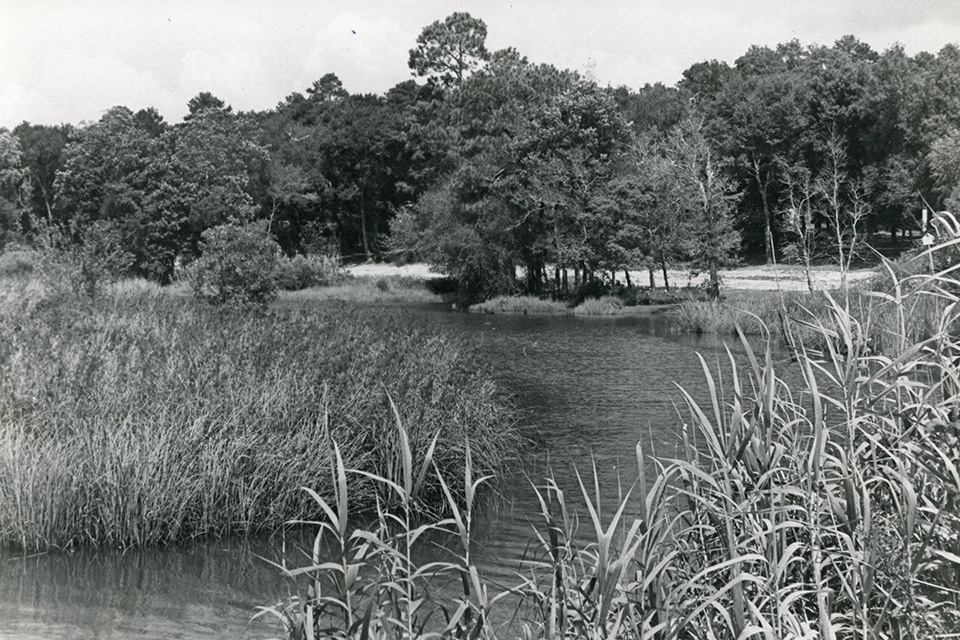 Carpenter Creek. Photo courtesy collections of the University of West Florida Historic Trust.
Carpenter Creek. Photo courtesy collections of the University of West Florida Historic Trust.
For roughly half of the twentieth century, Carpenter Creek was a center of domestic and spiritual life for the community. The Dawson women washed their laundry in the creek’s waters and children cooled off after days spent playing in the Florida heat. Water moccasins slid along the water’s surface, while in the trees above, Aunt Jenny’s beehives buzzed. On days when the nearby New Hope Baptist Church held baptisms in the creek, children were shooed onto the banks. During this period, this area was populated by only a few families, and close ties were forged both to each other and to the landscape. With access points in multiple neighborhoods, the narrow creek was at one point fully accessible as a public amenity, and older Pensacola residents describe being able to traverse the Creek from end-to-end.
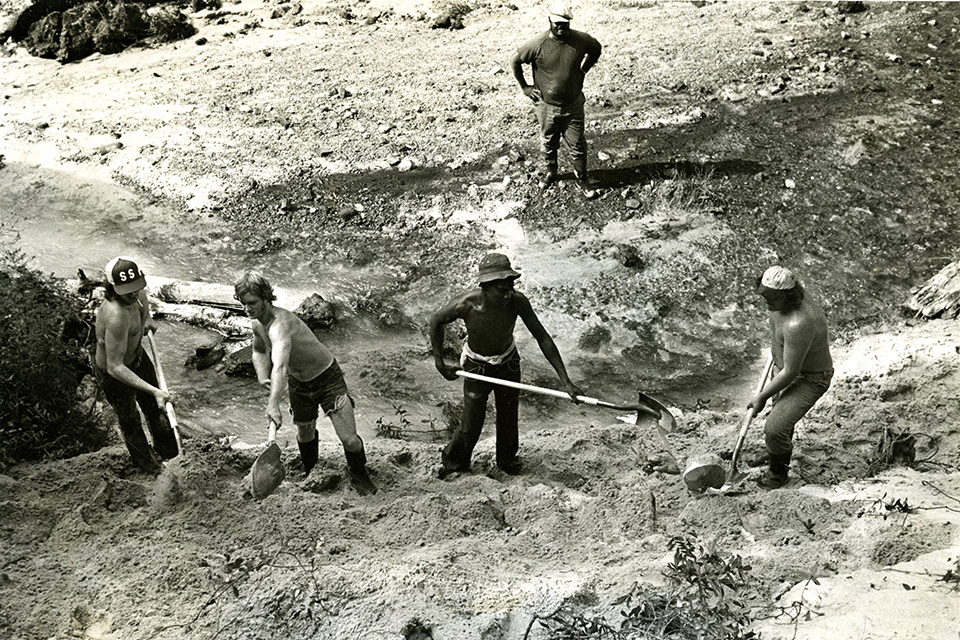 Escambia County restoration work on Carpenter Creek banks, 1976. Photo courtesy collections of the University of West Florida Historic Trust and SCAPE Studio.
Escambia County restoration work on Carpenter Creek banks, 1976. Photo courtesy collections of the University of West Florida Historic Trust and SCAPE Studio.
Beginning in the 1950s, Pensacola began rapidly urbanizing along with the rest of the state of Florida. Several forces—including construction of the national interstate system, the postwar housing boom, and the improved technology of indoor air conditioning—combined to create an enormous demand for property in Florida. Once a largely agricultural state, about one-third of Florida’s land was subdivided and sold for development between 1954 and 1982. Within this window, in 1956, the Dawson family sold most of their land in Pensacola Bay, including the area on Carpenter Creek. Around the same time, State Roads 296 and 289 were built over the creek, cutting off access to the waterway.
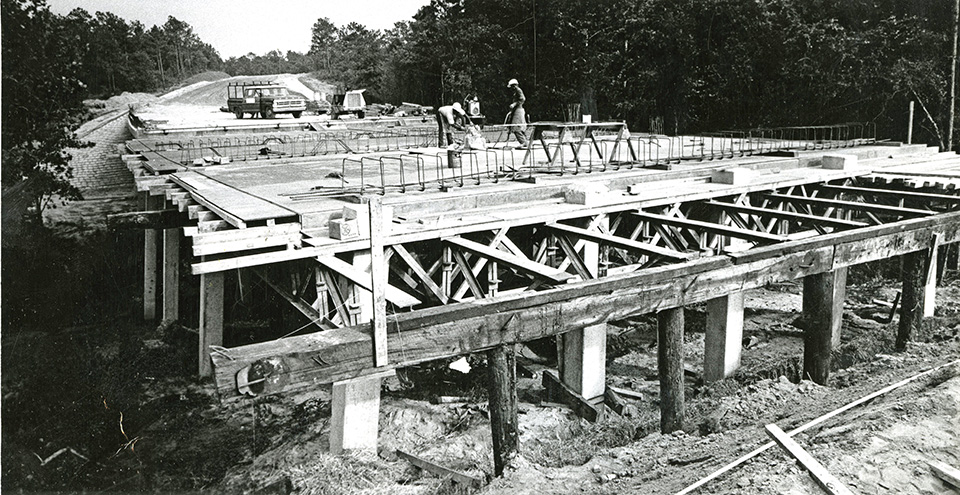 Bridge construction on Carpenter Creek, 1976. Photo courtesy collections of the University of West Florida Historic Trust and SCAPE Studio.
Bridge construction on Carpenter Creek, 1976. Photo courtesy collections of the University of West Florida Historic Trust and SCAPE Studio.
Today, the area around the creek, once a sparsely populated suburban settlement, is a densely developed urban neighborhood. Over the years, as development encroached, Carpenter Creek was rerouted to an open channel section. Shopping centers, apartment buildings, parking lots, and gas stations surround the waterway on both sides, cutting off safe access and endangering its ecological systems, increasing stormwater runoff, pollutants, and sediments caused by discharge channels into Bayou Texas.
Despite the many changes to the landscape over time, the bonds it forged remain strong. Many of the families who once shared Aunt Jenny’s swimming hole remain settled nearby, though most have lost their access to the creek.

Threat
The ecological threat to Carpenter Creek caused by years of pollution and overgrowth and the associated flood risk posed to the surrounding areas are immediate and ongoing, with no current mitigation efforts in place to alleviate the environmental pressures. In 2020 Escambia County launched a three-year watershed study to consider options for the larger Carpenter Creek study area, spanning from the creek’s springhead near Olive Road to its outlet at Bayou Texar, including restoration measures and green infrastructure development. This study is currently in the field evaluation stage.
Since early 2020, landscape architecture firm SCAPE has continued working in Escambia County on a team led by engineering firm Wood, PLC to develop a multi-year, watershed-scale plan for Carpenter Creek and Bayou Texar funded through the post-Deepwater Horizon RESTORE Act of 2010. Broadly, the plan focuses on access, water quality, ecological conditions, and opportunities for parallel restoration and recreation projects throughout the eighteen-square-mile watershed. Today, both Carpenter Creek and Bayou Texar suffer from pollution and are largely cut off from adjacent communities by infrastructure and overgrowth. A key part of the plan is to protect, enhance, and restore habitat and ecological space while expanding public access and recreational amenities connecting residents to the waterways for stewardship and enjoyment.
The mayor of Pensacola has urged the public to collect oral histories of the site to coincide with the watershed rehabilitation, but no city funding has been provided to support this request. An existing collection of historic photos and other cultural resources relating to Carpenter Creek is housed in the University of West Florida Historic Trust archives, and there is potential for this collection to expand with public engagement. While the environmental threats facing the site are indeed urgent, the site is also threatened by a loss of history and culture. As the generation of Black community members who grew up around the creek ages, their stories and lifeways, and the spirit of inclusivity and community they created, are at risk of being lost to history. In tandem with the ecology of the site, the history and significance of Carpenter Creek as a space for integrated recreation and community building must be preserved and sustained.
What You Can Do to Help
Honor the legacy of Carpenter Creek by supporting Jennie’s Legacy, an advocacy initiative launched by descendant Angela Kyle to promote the Black history of this cultural landscape and to advocate for the equitable restoration of the waterway and the surrounding community.
Learn more and submit feedback about the Carpenter Creek and Bayou Texas Watershed Management Plan by visiting SCAPE Studio’s project website.
Participate in public meetings on the watershed study to advocate for restored public access, historic markers, and signage commemorating the site and its significance.
Escambia County Natural Resources Management
Phone: (850) 595-4988
E: Naturalresources@myescambia.com
Write and Donate to the University of West Florida Historic Trust to encourage the collection of stories, photos, and other cultural resources from Carpenter Creek.
University of West Florida Historic Trust
P.O. Box 12866, Pensacola, FL 32591
Phone: (850) 595-5985
E: roverton@uwf.edu
Volunteer with local clean-up efforts and encourage a specific focus on African American youth engagement. Contact Emerald Coastkeeper for information on watershed clean-ups and maintenance:
Laurie Murphy, Executive Director
E: laurie@emeraldcoastkeeper.org
